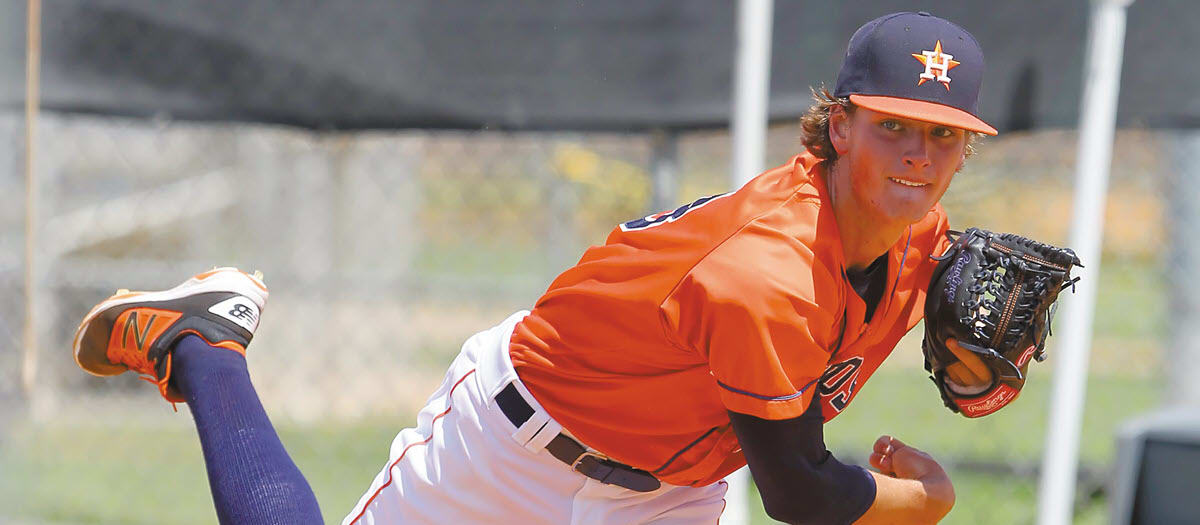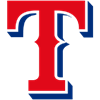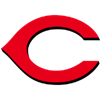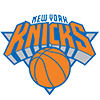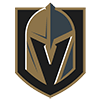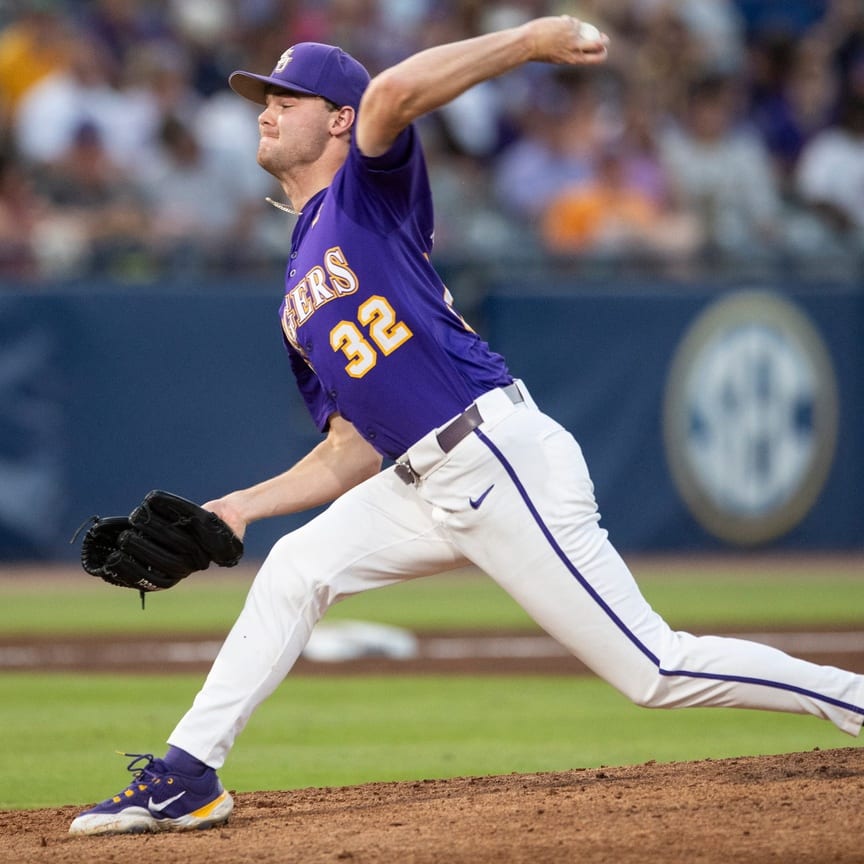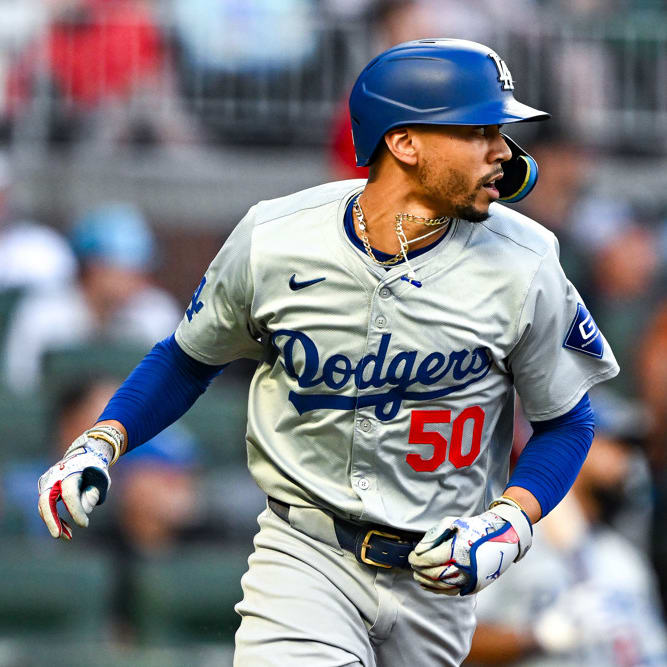For the third year in a row, I will be going division by division, providing analysis on every fantasy-relevant prospect in baseball while also ranking those prospects in their respective systems. This means there will be 20-plus prospects ranked in certain systems and less than 10 prospects ranked in others. There is no point in listing an irrelevant prospect just to reach an arbitrary total of 10, 20 or 30. Similarly, it is unfortunate to not include information on highly relevant prospects just because that prospect was not one of his team's 10 or 20 best.
The third installment takes us to the 125 prospects you need to know in the American League West.
I wrote the outlooks for most of the guys in the top 250 or so of the top 400 prospect rankings, so if you want more in depth analysis on someone, check out their player profile. Feel free to ask me any prospect-related questions in the comments section or on Twitter.
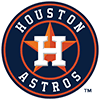 ASTROS
ASTROS
This system is loaded at the top AND it's incredibly deep. The Astros are the only team with three prospects in the top 15, and Josh James is an excellent fourth-best prospect to have. Houston has lapped the field when it comes to pitcher development, and you can reliably find several interesting arms at every level of its minor-league system. This is a team I would not want to trade with. They've been beaten before in trades, but it does not happen very
For the third year in a row, I will be going division by division, providing analysis on every fantasy-relevant prospect in baseball while also ranking those prospects in their respective systems. This means there will be 20-plus prospects ranked in certain systems and less than 10 prospects ranked in others. There is no point in listing an irrelevant prospect just to reach an arbitrary total of 10, 20 or 30. Similarly, it is unfortunate to not include information on highly relevant prospects just because that prospect was not one of his team's 10 or 20 best.
The third installment takes us to the 125 prospects you need to know in the American League West.
I wrote the outlooks for most of the guys in the top 250 or so of the top 400 prospect rankings, so if you want more in depth analysis on someone, check out their player profile. Feel free to ask me any prospect-related questions in the comments section or on Twitter.
 ASTROS
ASTROS
This system is loaded at the top AND it's incredibly deep. The Astros are the only team with three prospects in the top 15, and Josh James is an excellent fourth-best prospect to have. Houston has lapped the field when it comes to pitcher development, and you can reliably find several interesting arms at every level of its minor-league system. This is a team I would not want to trade with. They've been beaten before in trades, but it does not happen very often.
1. Forrest Whitley, RHP, 21, Triple-A
Forrest Whitley my goodness 😳 😳 https://t.co/wuBBx1JB6Mpic.twitter.com/BjmQDDFvv5
— Baseball America (@BaseballAmerica) October 10, 2018
It's hard to overstate how good of a pitching prospect Whitley is. Even so, I look back at past pitching prospects I've ranked in the top 10 and get PTSD. If I knew he'd be healthy for the next three-to-four years, I'd rank him in the top five. We don't know how many competitive innings he will throw this year after throwing just 52.1 innings in 2018, but we should assume the Astros would like to have him available in the postseason. It wouldn't surprise me if he were held back in extended spring training until May or June. It wouldn't surprise me if he opened the year at Triple-A and was up in the big leagues after a month. It would surprise me, however, if he threw more than 120-130 innings total in 2019. Stashing him out of the gates could pay off handsomely, but he could also occupy a bench spot on your roster for a couple months.
2. Kyle Tucker, OF, 22, Triple-A
6⃣ homers in 6⃣ games for @Astros No. 2 prospect Kyle Tucker, who notched 4 hits for the @FresnoGrizzlies last night: https://t.co/xVxQ8OksAcpic.twitter.com/TeNfoeM3A4
— MLB Pipeline (@MLBPipeline) August 24, 2018
Tucker hit .388/.463/.750 with 12 home runs and eight steals in the 28 Triple-A games (including PCL playoffs) that followed his big-league debut, yet because his small-sample MLB numbers were poor, it seems that his dynasty-league stock has taken a slight hit. This is a great time to buy in dynasty leagues and I think he is a nice value in redraft leagues (ADP: 265).
3. Yordan Alvarez, 1B/OF/DH, 21, Triple-A
Alvarez has monster power to all fields and an excellent approach for a player of his ilk. He should hit for a good average with a high OBP. It might be a couple years before he is a consistent 25-plus homer threat. The Astros won't rush him, but he could be ready for the majors in the first half.
4. Josh James, RHP, 26, MLB
This Josh James changeup at 92mph was FILTHY pic.twitter.com/mWU6khqKTz
— Pitcher List (@PitcherList) October 18, 2018
Rarely do players with as little pedigree as James emerge with his level of tools at the age of 25, so it's tough to properly value him. He has frontline stuff, but will enter his age-26 season with just 23 MLB innings. I'm a little surprised that his ADP is inside the top 200, but I also wouldn't fault anyone for taking that plunge.
5. J.B. Bukauskas, RHP, 22, Double-A
Bukauskas' height (he's six foot) and limited repertoire (fastball, slider, cutter) don't worry me as much as his command and durability. If he locates his fastball in the majors, he has No. 2 starter upside. He will reach the majors in some capacity this season if he stays healthy.
6. Corbin Martin, RHP, 23, Triple-A
Martin is one of those guys that seems like a pretty safe bet to be a quality big-league starter, but he lacks the high-end secondary offerings that would give him particularly high ceiling. He has the repertoire to be a solid No. 3 starter as long as he continues to locate his mid-90s fastball.
7. Freudis Nova, SS/2B/3B, 19, New York-Penn League
Freudis Nova single. pic.twitter.com/9wP4YuofUb
— Josh Norris (@jnorris427) July 23, 2018
Nova is incredibly talented and incredibly raw – although his 13.4 percent strikeout rate may not indicate that. He has 25-homer and 25-steal upside and may even hit for a high average while doing that, but he is going to be a slow mover. 2022 is probably the best-case ETA.
8. Seth Beer, DH/OF, 22, High-A
Sure, Beer could hit his ceiling and be a Nelson Cruz-esque producer – a hitter so good that even a contending team would let him occupy a roster spot as the DH. The problem is, if he's only 75 percent of that player, he won't see the field for the Astros.
9. Tyler Ivey, RHP, 22, Double-A
I'm a big fan of Ivey and he's available in almost all leagues. There's always a risk that the Astros are just grooming everyone in their system for a 4-5 inning role, but he has mid-rotation starter traits, with a chance for a little more. You can cut him early this year if it's not working.
10. Myles Straw, OF, 24, Triple-A
I can't wait for Straw to lose his prospect eligibility so I don't have to rank him anymore. His value is completely dependent on his team context – he is never going to profile as more than a fourth outfielder for the Astros, given his very limited offensive ceiling, but if he were playing every day, he could put up old-school Ben Revere numbers (.290 AVG, 30-plus SB) while hitting at the bottom of the order.
11. Luis Santana, 2B, 19, Low-A
Teenage prospects with exciting statistical indicators tend to see a bump in value after they get traded because they are no longer known only to prospect heads. Such is the case for Santana, who was the top prize the Astros received when they sent J.D. Davis to the Mets. He had more walks than strikeouts last year in rookie ball while getting to some power, but at 5-foot-8, 175 pounds, it remains to be seen how much damage he will do against more advanced pitching.
12. Garrett Stubbs, C, 25, Triple-A
Stubbs is pretty much big-league ready and has an above-average hit tool. Nobody expects the Astros to give him a huge workload, given his smaller frame, but he is a good athlete with excellent makeup, so I wouldn't bet against him being valuable in many formats as early as this year.
13. Bryan Abreu, RHP, 21, High-A
Abreu has one of the best curveballs in the minors and a plus mid-90s fastball. His slider, changeup and current command/control all point to a future in the bullpen, but if he can develop a quality third pitch, he would immediately establish a No. 2/3 starter ceiling.
14. Jayson Schroeder, RHP, 19, Low-A
Schroeder's $1.25 million bonus was the second-largest total (behind Beer) from Houston's 2018 draft class. His fastball is easily a plus pitch. The development of his curveball and changeup will determine his ultimate upside, but the Astros typically do well with these types of pitching prospects.
15. Peter Solomon, RHP, 22, High-A
Selected out of college in the fourth round of the 2017 draft, Solomon has good size (6-foot-4, 205 pounds), and a starter's repertoire. He projects as a No. 4/5 starter with a chance to beat that projection if any of his 50- 55-grade pitches noticeably improve.
16. Brandon Bielak, RHP, 22, Double-A
Much like Solomon, Bielak is a more-than-the-sum-of-his-parts starter who lacks a true plus pitch, but whose command, pitchability and deep repertoire will allow him to make it as quality starting pitcher. He is a nice sleeper, given his proximity to the big leagues and the lack of hype surrounding him.
17. Jairo Solis, RHP, 19, Rehabbing TJS (August 2018)
Solis underwent Tommy John surgery at the end of the year, so he will not pitch until 2020. When healthy, he has as much upside as any of the Astros' low-level arms. He has a mid-90s fastball, a changeup that has plus potential, and two solid breaking balls. I wouldn't roster him right now in most leagues, but he's a guy to consider adding at the end of the 2019 season.
18. Ronnie Dawson, OF, 23, Double-A
Dawson has a chance to provide enough value with his glove and his bat to see time in Houston's crowded outfield. He is a decent defender in center field and could be a plus defender in left field. His bat is power over hit, and strikeouts will always be an issue. He is not as fast (50-grade runner) as his minor-league steals totals indicate.
19. Framber Valdez, RHP, 25, Triple-A
Valdez has already reached the majors, but I think he's more of a swingman type (fastball/curveball), especially on this team. They could easily start Valdez, and give him a quick hook after turning a lineup over twice, but I don't think the Astros will ever treat him like a traditional starter.
20. Cionel Perez, LHP, 22, MLB
Perez would profile nicely as the first reliever to come in following a short four or five-inning start from someone like Valdez, and get 6-9 outs before turning it over to the back of the bullpen. I think he's good enough that he could provide fantasy value in deeper formats in such a role, but the upside is pretty limited.
21. Abraham Toro, 3B, 22, Double-A
Toro had a 1.023 OPS in the Arizona Fall League, good for the third-best mark in the league. He is a pull-heavy switch hitter who makes contact at a reasonable clip, but his hit tool and power both probably top out at around 50 on the 20-80 scale, so there is not much margin for error.
22. Heitor Tokar, RHP, 18, Gulf Coast League
An absolute giant of a man, Tokar received a $300,000 bonus out of Brazil during the 2017 July 2 international signing period. He is listed at 6-foot-6, 256 pounds as an 18-year-old, and he might be bigger than that. Tokar had a lot of success in the DSL, but pitcher statistics in the DSL are close to useless. If he has success in his stateside debut, his stock could skyrocket, in part because he has one of the coolest names in the minors.
23. Joe Perez, 3B, 19, New York-Penn League
Perez underwent Tommy John surgery after the Astros selected him with the No. 53 overall pick in 2017, and then he missed almost all of 2018 with various injuries. I like his power-hitting profile from back when Houston drafted him, but typically players who miss this much developmental time struggle to ever regain their former promise.
24. Deury Carrasco, SS/2B, 19, New York-Penn League
Despite standing 5-foot-9, Carrasco has a legitimate shot to stick at shortstop and is an athletic plus runner with 30-plus steal upside. He may not hit, which is why he is not a top-400 prospect, but he is too young for us to write him off just yet.
25. Ross Adolph, OF, 22, Low-A
One of the secondary players to come back from the Mets in the Davis trade, Adolph received an over-slot $125,000 bonus after being selected in the 13th round of the 2018 draft. He has some power and speed, and the fact that the Astros wanted him is encouraging.
26. Carlos Machado, OF, 20, Low-A
Machado has a strong hit tool thanks to excellent bat-to-ball ability and an all-fields approach. He can't play center field and probably fits best in left, which puts a lot of pressure on him to eventually start getting to notable power in games.
27. Alex McKenna, OF, 21, Low-A
A fourth-round pick out of college in 2018, McKenna had success at multiple stops after signing. He should return to Low-A, where he will continue to try to prove he can stick in center field long term. His bat was the selling point when the Astros selected him, so there's also a chance he could fit in a corner.
28. Jonathan Arauz, 2B, 20, High-A
Arauz turned heads with his 54-game run as a 19-year-old at Low-A last year, logging a 147 wRC+ and a 0.79 BB/K. He received a 50-game suspension back in 2017 for testing positive for a banned stimulant, so that showing in the Midwest League was really encouraging. However, he completely flopped at High-A. If he can recapture his first-half form, he would once again profile as a potential bat-first second baseman.
29. Jeremy Pena, SS, 21, Low-A
Pena was selected with the No. 102 overall pick in 2018 as a glove-first college shortstop. He is a plus runner, however, making him essentially an older, less athletic version of Carrasco. If he hits enough, his glove will earn him an everyday role and his speed would provide fantasy value.
30. Cristian Javier, RHP, 22, High-A
Javier has posted some really impressive strikeout totals in the lower levels of the minors, but he walks too many batters and it's not really a starter's pitch mix. He probably has more upside someday working as a late-inning arm than trying to make it as a starter.
31. Rogelio Armenteros, RHP, 24, Triple-A
Armenteros is big-league ready, but contrary to what his Triple-A numbers may indicate, that big-league role is likely to be a mop-up reliever or swingman. He doesn't have a plus pitch and would be a major ratio risk if he were to get a spot start in 2019.
32. J.J. Matijevic, DH/OF, 23, Double-A
Matijevic was selected with the No. 75 overall pick in 2017 as a slugger with no real defensive home. He has significant raw power, but it comes with significant swing and miss. Basically, we're talking about a poor man's Seth Beer.
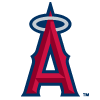 ANGELS
ANGELS
I love this top six – the Angels have power/speed position players all over the diamond. Adell is obviously the clear top guy, but you could order 2-6 in any order and I wouldn't push back too hard. The pitching in this system does not stack up to the hitting, but there are a few interesting lottery-ticket arms and lower-ceiling close-to-the-majors hurlers. The Angels are one of the more fantasy-friendly teams when it comes to aggressively promoting prospects, which also helps.
1. Jo Adell, OF, 19, Double-A
Jo Adell's offseason swing update (via his Instagram story). pic.twitter.com/Ftt1rrxjTO
— Fabian Ardaya (@FabianArdaya) December 30, 2018
There have been some pretty aggressive rankings on Adell this offseason, and while he has the upside to pay off that optimism, I think there are reasons to be a little cautious at this point in time. Save for an 18-game run in the Pioneer League in 2017, his strikeout rate has always been north of 24 percent, and he has a very pull-heavy approach. It's very easy to fall in love with the upside (30/30 wouldn't be surprising some day), but I think it will be several years before he hits better than .260 in the majors. Everyone just needs to be patient, but given the hype this offseason, that might be asking too much.
2. Brandon Marsh, OF, 21, Double-A
Marsh still has impressive power and speed, but he's starting to look like a better bet in OBP leagues, as high strikeout rates accompanied him at age-appropriate levels last year. Things could get worse against Double-A and Triple-A pitching, so this wouldn't be a bad time to shop him.
3. Jordyn Adams, OF, 19, Low-A
With 80-grade speed and plus raw power, Adams has the upside to someday be a first-round fantasy pick. While this has led to Adell comparisons, Adell was a much more polished hitter after turning pro, so let's pump the brakes on the Adams hype for now. His first taste of Low-A pitching should quickly let us know how realistic his ceiling is. He could hit .230 with a 30 percent K-rate. He could also finish the year as a top-15 fantasy prospect.
4. Luis Rengifo, 2B, 22, Triple-A
The nice thing about this specific potential utility player with the upside to be quite a bit more than that is that he's very close to the majors. I get a bit of a Jose Ramirez vibe from Rengifo, so don't sleep on him. He's not a natural shortstop but is good at pretty much everything.
5. Jeremiah Jackson, SS/2B, 19, Low-A
.@Angels AZL prospects Jeremiah Jackson (8), Jordyn Adams (21) and D'Shawn Knowles (20) all promoted today. I was at there last game last night. Here's some at-bats. Knowles one of the most improved since Ext Spring. JJ super underrated. Adams 💪 #ProspectOnepic.twitter.com/f0Aq0pi52W
— The Welsh (@IsItTheWelsh) August 1, 2018
Jackson has the potential to be a power/speed middle infielder who hits around .255 or .265. His quick bat should generate 25-homer pop, and he has the speed to flirt with 20-steal seasons. He will need to make more contact and work on using the whole field better at Low-A.
6. D'Shawn Knowles, OF, 18, Low-A
Knowles offers an appealing combination of upside and polish. He has the type of frame (six foot, 165 pounds) that often leads to a prospect's power potential getting undersold. He also has enough speed to steal 20-plus bases. His stock will explode if he performs as the youngest hitter in the MWL.
7. Griffin Canning, RHP, 22, Triple-A
I don't find Canning's delivery to be visually appealing, but he has four pitches and above-average command, which was all he needed to climb from High-A to Triple-A last year – he completely skipped rookie ball and Low-A. He should join the big-league rotation early this season, but he lacks high-end stuff. I will take a wait-and-see approach in redraft leagues and won't be bummed if that means I miss out on him.
8. Jahmai Jones, 2B, 21, Double-A
I'm honestly pretty surprised that Jones is still held in such high regard by several outlets that rank prospects. He's a poor defender at second base and has a fringe-average hit tool. He has 20-homer power and 30-steal speed, but that's assuming he is a league-average hitter, which I don't think he will be.
9. Matt Thaiss, 1B, 23, Triple-A
I might be too low on Thaiss – I had him ranked much higher last summer, but got a little skittish after he was roughly league average as a 23-year-old first baseman at Triple-A. He has tapped into more power as he has neared the majors and has always made contact at a solid clip. That said, there's a chance he is Jake Bauers without the speed, which would obviously not be great.
10. Patrick Sandoval, LHP, 22, Double-A
Sandoval was shipped from the Astros to the Angels for Martin Maldonado at the trade deadline. He was already a top-400 prospect before the trade, and pitched even better after switching organizations. Despite his gaudy numbers, Sandoval's stuff is more in line with what you expect from a No. 4 starter, but I think he can be better than that. He's a 6-foot-3 lefty – that's a great place to start – and he commands three quality pitches.
11. Jose Suarez, LHP, 21, Triple-A
Being left-handed and having a plus changeup is sometimes all it takes to cruise through the minors. "Cruise" might even be an understatement. He opened 2018 at High-A, and nine starts later he was at Triple-A. He is only 5-foot-10 and his fastball isn't great, so there is a lot of risk in betting on him to have initial success in the big leagues. The nice thing is, we'll get to see him pretty early this year, and if the stuff doesn't play, you can just cut bait quickly.
12. Jeremy Beasley, RHP, 23, Double-A
People might say that Jackson or Knowles are the sleepers of this system, but Beasley is an actual sleeper. As in, he is available in pretty much every league. He is a fastball-splitter-slider guy with a starter's frame (6-foot-3, 215-pound). His splitter is a plus pitch, and he will need to demonstrate the ability to get more whiffs in a return to Double-A. If he does, he could surprise a lot of people.
13. Trent Deveaux, OF, 18, AZL
Deveaux not only had more pedigree than Knowles coming out of the Bahamas as part of the Angels' 2017 J-2 class, he wasn't seen as that far behind fellow countrymen Kristian Robinson. However, the transition into pro ball has not gone smoothly for Deveaux, and now he is a bit of an afterthought in most dynasty leagues. He still has 70-grade speed, so if he starts hitting this year, there should be a rush to add him.
14. Chris Rodriguez, RHP, 20, Low-A
Rodriguez has a deep arsenal and as much upside as any pitcher in this system. Last year was supposed to be his breakout campaign, but a back injury erased his entire season. That is pretty scary, both because back injuries often never truly go away, and because it cost him a year of developmental time. That said, if he is impressing early this season, it would be wise to rush out and grab him.
15. Luis Madero, RHP, 21, High-A
Traded from the D-backs to the Angels for reliever David Hernandez in 2017, Madero (6-foot-3, 175 pounds) may still be more projection than substance at the moment, but he was pretty dominant in nine starts at High-A last year. If he is consistently sitting in the mid-90s with the fastball this year, that would be actionable in deeper leagues.
16. Jared Walsh, 1B/OF/LHP, 25, Triple-A
Walsh is a lefty-hitting corner guy who is probably just a Quadruple-A bat at the end of the day, but he's knocking on the door of the big leagues and has plus power. He also happens to work as a LOOGY out of the 'pen, which could give him the edge for a big-league roster spot at some point.
17. Alexander Ramirez, OF, 16, Dominican Summer League
Ramirez received $1 million in late August of 2018, as soon as he turned 16 years old. He is expected to end up in an outfield corner, where his advanced approach and projectable power would profile well, but he won't make his stateside debut until 2020.
18. Stiward Aquino, RHP, 19, Rehabbing TJS (February 2018)
Aquino was a pretty trendy name in the Angels' system a year ago before needing Tommy John surgery. Given the timing of the surgery, it is possible we see him sent out to an affiliate in July. He has No. 2/3 starter upside, and might impress enough late in the year to be worth a stash heading into the offseason.
19. Ty Buttrey, RHP, 26, MLB
An excellent example of the perils of overvaluing relief prospects, Buttrey is far from the best relief prospect in baseball, but was getting regularly drafted in even 12- and 15-team redraft leagues earlier this offseason. Now that the Angels have signed Cody Allen, Buttrey can be cut loose in most formats.
20. Jose Soriano, RHP, 20, Low-A
Soriano has a big mid-90s fastball that should only improve as he fills out his slight 6-foot-3 frame. His secondaries are pretty inconsistent, however, and he struggles to throw strikes. The risk outweighs the upside right now, but if he shows improved control, he would be worth a flier.
21. Livan Soto, 2B/SS, 18, Pioneer League
Soto was one of the prospects the Braves had to forfeit because of their misdeeds a couple years ago. He is just six foot, 160 pounds, but has an excellent handle on the strike zone, above-average speed and will stick in the middle infield. He needs to do more damage with the bat (.349 SLG last year) to profile as a regular.
22. Jack Kruger, C, 24, Double-A
Kruger is good enough behind the dish to play the position in the big leagues, and he is relatively close to the majors. Those are the top two selling points. He hasn't struck out much in the minors, but will probably just hit an empty .255 or so.
23. Michael Hermosillo, OF, 24, MLB
Hermosillo is a pretty standard fourth outfielder. He is capable of playing all three spots in a pinch and has hit some in the upper levels. Unfortunately, Adell will be up in the majors soon to displace Kole Calhoun, so I don't see a path to Hermosillo getting upgraded to the role of third outfielder.
24. Kevin Maitan, 1B/3B, 19, Pioneer League
When we talk about tumbling down the defensive spectrum and the negative consequences that come with that, Maitan is a prime example. He now likely ends up at first base or DH, and there's no evidence he will hit enough to pull that off. The raw power is there, but that's about it.
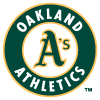 ATHLETICS
ATHLETICS
On the bright side, Oakland is ahead of schedule in its rebuild, thanks to the immediate impact players like Matt Chapman, Matt Olson and Ramon Laureano have provided. However, this system is not as good as it probably should be, considering all of the rebuilding trades they have made in recent seasons. There is some upside in the top 10, but the second-safest player in this system is a pitcher who is still recovering from Tommy John surgery, which is not great.
1. Jesus Luzardo, LHP, 21, Triple-A
Jesus Luzardo, the @Athletics' top prospect & the highest-ranked pitching prospect on the World team, struck out 2 in 2 innings of work in today's #FuturesGame. Watch live: https://t.co/oIijGG7lzTpic.twitter.com/x8z5f3PLMn
— MLB Pipeline (@MLBPipeline) July 15, 2018
People are starting to wise up and realize that Luzardo had been undervalued in redraft leagues since they started drafting in November. I think he will be up in late April at the very latest – he is big-league ready and Oakland's rotation is a mess. He could be this year's Walker Buehler in terms of total innings (Buehler threw 137.1 in the MLB regular season) and effectiveness.
2. A.J. Puk, LHP, 23, Rehabbing TJS (April 2018)
Puk is one of my favorite trade targets in dynasty leagues right now. While he probably won't throw 150-plus innings in the majors until 2021, he is good enough to develop into an SP1. Look for him to start pitching for an affiliate in July or August – it is not a lock he pitches in the big leagues this year. I do expect him to get assigned to the AFL.
3. Austin Beck, OF, 20, High-A
Buy low on Beck. He still has big power and speed upside, but he focused on improving as a hitter in his full-season debut, and was successful in doing so. He has realistic 30-homer/20-steal upside, and if his hit tool gains are real, we're looking at a future top-50 fantasy pick.
4. Jorge Mateo, SS/2B/OF, 23, Triple-A
It's very possible Mateo will just never hit enough to be more than a Terrance Gore-esque annual September roster addition. It's also possible he makes an adjustment or two and reaches the big leagues this summer. He is close and has 40-plus steal potential. If he repeats his 2018, he will have a dramatic fall down the top 400, but I think patience is prudent here.
5. Sean Murphy, C, 24, Triple-A
One of the top selling points with Murphy is that he is a good enough defender to play five days a week, and he should reach the majors this year. He probably won't hit for a high average (maybe .240-.250) but he has 20-homer power.
6. Lazaro Armenteros, OF, 19, High-A
Lázaro Armenteros (aka, Lazarito) swings from yesterday's matchup in Peoria. 👌@BeloitSnappers@Athletics#Athletics#MiLBpic.twitter.com/qrFCL0MWQJ
— Lance Brozdowski (@LanceBroz) August 27, 2018
Armenteros is obviously talented and obviously flawed. He had a 33.8 K%, 51.7 Pull% and 46.2 GB% as a 19-year-old at Low-A. That's all bad. But, he also has monster raw power (elite flyball distances and exit velocities), 50-grade speed and has shown a willingness to take a walk. I don't think he's going to hit enough for the power or speed to matter… but he could.
7. Jameson Hannah, OF, 21, Low-A
Hannah, who received a $1.8 million bonus in the second round last year, has a chance to develop into a classic table setter with plus speed. He is just 5-foot-9, but his body is physically mature (185 pounds). He needs to be able to handle center field, as he has a below-average arm and won't do enough damage on offense to fit in left field.
8. Luis Barrera, OF, 23, Double-A
Barrera gets slept on in this system. He is close to the majors, has impact speed and good makeup. He is basically Hannah without the pedigree. Barrera won't hit for much power, but if he offers enough value with his glove in center field, there's a chance he could play everyday and hit .280 with 20-plus steals.
9. Daulton Jefferies, RHP, 23, High-A
Jefferies is a good example of why it's dangerous to wave Tommy John surgery away as if it never affects pitchers long term anymore. He had the surgery in April of 2017 and pitched a total of two innings last year before getting shut down again. When fully healthy, Jefferies flashed No. 2 starter upside, but at this point we really need to see him log some innings.
10. Sheldon Neuse, 3B, 24, Triple-A
Neuse was one of several Triple-A hitters in this system who wholly underwhelmed last year. He improved in the second half, but not to the point that he needs to be rostered in most dynasty leagues. One big issue: he fits best at third base and the A's have Chapman, so it's hard to see where he fits in for 2019 and beyond.
11. Marcos Brito, 2B, 19, Low-A
Scouts love Brito because of his on-field presence and slick actions at second base. He was a high-pedigree J-2 signee in 2016, but has not yet impressed much with the bat. As a plus runner who could be a plus defender, he only needs to be adequate offensively to play a lot and provide fantasy value.
12. Kevin Merrell, SS/2B/OF, 23, High-A
Merrell might be the fastest guy in this system, which would be saying a lot. Unfortunately, he slashed .267/.308/.326 as a 22-year-old at High-A last year, so we're still waiting for signs that he will do enough with the bat to put his speed to use. An elbow injury and a concussion cost him the second half of the season, so he has also missed some much-needed pro reps. He received $1.8 million in the 2017 draft, so there is a lot of pedigree here, and if he starts hitting, he would be an excellent in-season add.
13. Greg Deichmann, OF, 23, High-A
Deichmann is like the power-hitting version of Merrell – a high-pedigree college pick in the 2017 draft who has not hit at an age-appropriate level in pro ball and missed significant time due to injury in 2018. He dealt with wrist and hand injuries, so hopefully his 2019 performance does not suffer as a result. As with Merrell, if Deichmann starts hitting, he immediately becomes an intriguing add.
14. James Kaprielian, RHP, 25, High-A
Kaprielian represents a very similar cautionary tale to Jefferies, having undergone Tommy John surgery back in April of 2017 and throwing zero competitive innings in 2018. Unlike Jefferies, however, Kaprielian turns 25 in March and has thrown less than 50 pro innings. At his best, he looked like a future No. 2 starter, but there is no reason to believe he will ever approach that outcome at this point.
15. Tyler Ramirez, OF, 24, Triple-A
Ramirez has one of the best hit tools in this system, but that's about all he does well. He fits best in left field, has fringe-average power and speed and turns 24 this offseason. Maybe he will just hit so much that he can be a fit in left, but that seems unlikely.
16. Alfonso Rivas, 1B, 22, Low-A
Rivas received just under $500,000 after the A's selected him in the fourth round last year. He is a left-handed first baseman with a good approach but questionable game power. There is a chance he ends up with a plus hit tool, so if he starts tapping into surprising pop, he would become interesting.
17. Skye Bolt, OF, 25, Double-A
This system is loaded with outfielders who do something interesting but are pretty old for their respective levels. Bolt has some similarities to Keon Broxton – an excellent athlete and defensive center fielder who probably just won't hit enough for any of that to matter.
18. Jordan Diaz, 3B, 18, New York-Penn League
Diaz was an unheralded international signee out of Colombia back in 2016, but he showed excellent plate skills as a 17-year-old in the AZL last year. He will need to develop power in order to be a big-league third baseman, but given his age, patience and contact skills, that is very possible.
19. Grant Holmes, RHP, 23, Triple-A
It seems like Holmes has been around the dynasty-league radar forever, with his stock steadily trending down as he nears the majors. If Oakland were rebuilding, Holmes might get some starts this year, but if they are competitive again, he may have to make his big-league debut out of the bullpen, where his shaky command would be much more tolerable.
20. Jeremy Eierman, SS/3B/2B, 22, Low-A
Eierman was seen as a bat-first shortstop when the A's selected him out of college with the No. 70 overall pick last year. He wasn't particularly impressive at the plate after signing, however, and given his age and defensive shortcomings, he could quickly become a non-prospect.
21. Dairon Blanco, OF, 25, Double-A
The A's signed Blanco out of Cuba in late 2017. He is a 25-year-old with borderline 80-grade speed and zero experience above High-A. If he were to start showing more with the bat this year, he would be an interesting add in deeper leagues.
22. Kyler Murray, OF, 21, NFL Draft
It would be super cool if Murray played baseball, but he's not going to play baseball.
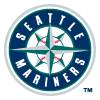 MARINERS
MARINERS
This system was a complete disaster at the end of the 2018 season. It has improved via trades and the Kikuchi signing, but it might not be a top-half system yet, which is saying a lot considering the players Seattle has traded away. The hitters 2-5 on this list have the type of upside fantasy owners love to dream on, while I'm lower on most of the top pitchers in this system than some other outlets are.
1. Yusei Kikuchi, LHP, 27, MLB
So, on the one hand I sort of get the argument that Kikuchi should be one of the first picks in first-year player drafts, but on the other hand, is there any scenario where you couldn't flip Victor Victor Mesa, Trevor Larnach or Jonathan India to a rebuilding team on April 15 and get a pitcher better than Kikuchi back? Perhaps not if Kikuchi regains his 2017 form. Either way, it's really just not my style to take a 27-year-old pitcher who has never pitched in the majors over a top-40 hitting prospect.
2. Jarred Kelenic, OF, 19, Low-A
The headliner in the Edwin Diaz/Robinson Cano return, Kelenic could develop into a Kyle Tucker-esque prospect in the not-so-distant future. The track record of the top prep hitters from recent draft classes is pretty mixed, and we should get a better sense of his floor and ceiling when we see how he handles Low-A pitching.
3. Julio Rodriguez, OF, 18, AZL
Last round!!🦍🔥 #JRODshow#powerpic.twitter.com/7OBdRzfTc4
— Julio Rodriguez (@J_RODrodiguez44) December 19, 2018
I don't love having to rely on DSL performance, but Rodriguez confirmed the amateur scouting report in his pro debut, and obviously has a very high ceiling. He could be an Eloy Jimenez-esque prospect in a couple years, and you'll have to get aggressive to acquire him this offseason. I'm projecting him to go to the AZL, but depending on how he looks this spring, the Mariners could give him a more advanced assignment.
4. Jake Fraley, OF, 23, Double-A
Home run number 12 on the season for this absolute STUD! Jake Fraley leaves the yard for the @PerthHeat#ABLHeatBanditspic.twitter.com/RIyDRm9k7P
— Brut Australian Baseball League (@ABL) January 20, 2018
As a Fraley believer, the trade from the Rays to the Mariners was bittersweet. He now has a much clearer path to playing time, but is no longer under the radar. Fortunately if you already own him, you can dream on a 15-HR, 25-SB, .280 hitter as early as 2020.
5. Noelvi Marte, 3B/SS, 17, Dominican Summer League
The @Mariners agreed to terms with SS Noelvi Marte. The No. 4 overall prospect will receive a $1.55 million signing bonus, according to @BenBadlerhttps://t.co/742YZwkVtZpic.twitter.com/VzfIRwdxdv
— Baseball America (@BaseballAmerica) July 2, 2018
Marte is on the short list of top targets from the 2018 J-2 class. He is this year's clear fantasy-over-reality guy, and last year's version sits at No. 3 in this system. Marte might not quite have the elite power projection of Rodriguez (although he could get there), but he might be an above-average runner when he reaches the majors, giving him a chance to be a five-category stud.
6. Justin Dunn, RHP, 23, Triple-A
Dunn is already 23 and it's not a lock he will be a starter. After the trade to Seattle, I think the most likely outcome is that he sticks in the rotation as a high-strikeout WHIP risk, which is still a valuable pitcher in most formats. He probably won't be relevant in standard mixed leagues until 2020.
7. Justus Sheffield, LHP, 22, Triple-A
Justus Sheffield's nasty slider to fan Tommy Josephpic.twitter.com/iVtZMmh8co
— Pitcher List (@PitcherList) February 25, 2018
The trade to Seattle validates Sheffield's flaws and also gives him a much longer leash as a starting pitcher. I suspect he would return more fantasy value if he were moved to the bullpen, where he could be lights out, but he will get his shot in the rotation this summer.
8. Evan White, 1B, 22, Double-A
White is a very unique prospect. It seems unlikely that he will be an above-average power contributor among first basemen, but he could be an above-average contributor in AVG and steals while hitting high in the lineup. If he struggles as a 23-year-old at Double-A, his stock will plummet.
9. Dom Thompson-Williams, OF, 23, Double-A
The Yankees snagged DTW in the fifth round of the 2016 draft as a tools bet, and while it took him a while to get going, he tapped into his impressive physical arsenal last year, albeit as a 23-year-old at High-A. The organization quickly sold high, shipping him to Seattle in the James Paxton trade. He has big raw power and some speed, but also strikes out a lot. He is very raw for his age, but if he is in fact a late bloomer, there's quite a bit of upside here.
10. Daniel Vogelbach, DH/1B, 26, MLB
Talk about a tough guy to rank. Swaggy V is now 26 with zero minor-league options left. To make matters worse, he is a very poor defensive first baseman and can't hit lefties. In some other organizations, there would probably be some talk about designating him for assignment, but the Mariners should have at-bats for him if they can find a taker for Edwin Encarnacion.
11. Logan Gilbert, RHP, 21, Low-A
Gilbert received almost $4 million when the Mariners selected him with the 14th overall pick last year. He did not pitch after signing, with the Mariners citing his college workload and a bout of mononucleosis as the reasons. He could shoot up this list if he impresses in his pro debut, but there are questions about the quality of competition he faced pitching for Stetson and the quality of his secondary pitches.
12. Shed Long, 2B, 23, Triple-A
Long projected to be a bench player with the Reds, but after getting traded to the Mariners in the three-team deal that sent Sonny Gray to Cincinnati, Long now has a good shot of getting a look as an everyday player. His hit tool and power seem a little light at second base, but he has the speed to steal 15-20 bases, which could someday make in viable in really deep leagues.
13. Kyle Lewis, OF, 23, Double-A
Lewis, the 11th overall pick in 2016, still has a lot of upside, it has just become increasingly less likely that he comes close to hitting that ceiling. Significant lower-body injuries have stunted his development and he did not perform when on the field last year.
14. Erik Swanson, RHP, 25, Triple-A
Swanson figures to at least have value in AL-only leagues this year. He is the lesser of the three prospects Seattle got back for James Paxton, but could log a solid K-rate with an ERA in the 4.00s and a WHIP in the 1.30s. They may let him compete for a rotation spot in camp, but I expect him to go to Triple-A for at least a couple weeks to start the year.
15. Sam Carlson, RHP, 20, Rehabbing TJS (July 2018)
Carlson was a high-pedigree prep pitcher that the Mariners gave $2 million to after selecting him with the No. 55 overall pick in 2017. He has barely pitched since entering pro ball and a long lead up to Tommy John surgery last year means we won't see him in 2019 or 2020. He should not be rostered unless your league is incredibly deep, but is a name to remember in a couple years.
16. Cal Raleigh, C, 22, Low-A
The Mariners grabbed Raleigh with the 90th overall pick last year, and he proceeded to showcase impressive game power and a solid approach against short-season pitchers. While he could develop into a solid offensive option at the position, there's a good chance his defense never becomes adequate enough for him to catch in the big leagues.
17. Braden Bishop, OF, 25, Triple-A
In some systems, Bishop would not be listed, but given the Mariners' lack of quality big-league options, he could be in for a significant role at some point in 2019 or 2020. He is a good defender in center field, has good contact skills and is a plus runner, so if he plays, he should at least chip in some speed without an awful batting average.
18. Joey Curletta, 1B, 25, Triple-A
A righty-hitting corner bat with plus pop and some on-base skills, Curletta is likely just a Quadruple-A guy, but he could get looks in the majors at some point in the next year or two.
 RANGERS
RANGERS
Texas has sort of been forced into a mini rebuild, and they have done an OK job of acquiring talent in recent years, but this is by no means a top-10 system. All of the most exciting position players are at least several years away from the majors, and with a couple exceptions, the same can be said of the top pitchers. Once seen as one of the top organizations in terms of acquiring and developing prospects, the Rangers' recent track record hasn't been great, and the departure of A.J. Preller is a big reason why.
1. Bubba Thompson, OF, 20, High-A
Hubba Bubba!@Rangers No. 10 prospect & 2017 first-round #MLBDraft pick Bubba Thompson had a big game -- in one inning -- for the @HickoryCrawdads last night: https://t.co/Y37E6Kyq2qpic.twitter.com/iZYUA8lHTX
— MLB Pipeline (@MLBPipeline) August 22, 2018
Few prospects have the power/speed upside that Thompson boasts. His 70-grade speed was on full display last year, but he also has huge raw power to the pull side. His hit tool is a work in progress, but if things click in the upper levels, he will be a top 10 prospect.
2. Joe Palumbo, LHP, 24, Double-A
Perhaps my favorite sleeper pitching prospect (well, he was a sleeper fairly recently), Palumbo doesn't come with a ton of pedigree, but he has a No. 3 starter kit that's ready to be put to work if he proves to be durable. He should spend most of the year at Double-A and Triple-A, but could be up in the second half.
3. Sherten Apostel, 3B, 20, Low-A
Here's that video of Sherten Apostel's bomb from yesterday. He didn't get cheated. #Rangerspic.twitter.com/qlqJWUsQk2
— Josh Norris (@jnorris427) October 4, 2018
Apostel has mammoth raw power and has shown pretty solid plate skills thus far. Right-handed corner bats who have not yet made their full-season debuts are pretty risky, but he is worth rostering in most formats, due to his middle-of-the-order upside, particularly in OBP and points leagues.
4. Hans Crouse, RHP, 20, Low-A
Crouse has a really ugly delivery, but the results have been outstanding. If he throws enough quality strikes, he should be at least a No. 3 starter, but there's a chance his delivery/command issues force him to the bullpen, where he could be a lights-out closer.
5. Anderson Tejeda, SS, 20, Double-A
Tejeda answered the bell in a big way last year, not only improving as a hitter, but proving to many evaluators that he will be able to stick at shortstop. He is not all that different from Esteury Ruiz, yet Ruiz seems to be more highly regarded in dynasty leagues.
6. Eli White, 2B/3B/SS, 24, Triple-A
White has been a bit of a late bloomer, which should warrant skepticism about how he will perform when he reaches the majors. He has good size (6-foot-2, 175 pounds) for a middle infielder, and a modest power/speed combo. Look for him to debut this summer if he is producing at Triple-A.
7. Cole Winn, RHP, 19, Northwest League
Of the pitchers from the 2018 draft class who did not pitch after signing, Winn might have the highest ceiling. He has four quality pitches, several of which could end up being plus or better, and a chance to have plus command. I don't love rostering pitching prospects who probably won't debut until June, but Winn's ceiling warrants that aggression in deeper leagues.
8. Leody Taveras, OF, 20, High-A
Taveras has been a below-league-average hitter at every single stop above rookie ball since 2016. I'm all for preaching patience, but there comes a time when we have to accept the new reality that a player just isn't as good as we hoped they would be. Taveras has one of the best center-field bodies to come along since Byron Buxton, but he does very little damage at the plate, and hasn't even used his speed to steal more than 20 bases in a season yet.
9. Brock Burke, LHP, 22, Triple-A
Burke, who used to be in the Rays' system, was probably the player the Rangers wanted most from the package they got back in the three-team trade that sent Jurickson Profar to Oakland. This team has really struggled to develop quality starting pitchers, and Burke has a chance to be a good one while being close to the majors. Just on the strength of his fastball and changeup, he could be devastating out of the bullpen, but if he can improve one of his breaking balls and his command, he could be a No. 2/3 starter.
10. Osleivis Basabe, SS, 18, AZL
Here's the sleeper. I will be adding him to the top-400 prospect rankings soon (there will be a big update when I'm done with these divisional articles), but he is a definite guy to keep in mind in first-year player drafts. Basabe signe for $550,000 in December of 2017 and had an excellent showing in the DSL. He has 70-grade speed and should stick at shortstop. While he showed a good handle of the strike zone in his debut, his approach is very aggressive and he could run into trouble stateside. That said, his tools are worth gambling on in case he doesn't skip a beat against AZL pitching.
11. Tyreque Reed, 1B, 21, High-A
Reed is right up there with Apostel for the title of most raw power in the system. A juco draft pick in 2017, Reed struggled initially at Low-A, but really rounded into form down the stretch. He strikes out quite a bit right now, and as a R/R first baseman/DH, there will be a lot of pressure on him to keep this up as he climbs the ladder.
12. Cole Ragans, LHP, 21, Rehabbing TJS (March 2018)
Ragans seemed poised to continue to climb rankings in 2018, but his season was erased due to Tommy John surgery before it started. He might be able to join an affiliate in July, and if he looks good early, he could be a helium guy next offseason.
13. Taylor Hearn, LHP, 24, Triple-A
Sent to Texas from Pittsburgh as the real-life headliner in the Keone Kela trade (although Apostel is the fantasy headliner), Hearn is a big lefty with an upper-90s fastball. He doesn't generate many groundballs and his offspeed pitches are inconsistent. Additionally, his command leaves quite a bit to be desired. He fits easily as a late-inning reliever, but the Rangers will continue to try to develop him as a starter for now. He could debut this summer.
14. Mason Englert, RHP, 19, Northwest League
The Rangers used three of their first four picks in last year's draft on high-school arms, and while Englert was the last to come off the board and received the smallest bonus, he impressed in instructs and has passed Owen White (the Rangers' second selection) in the organizational hierarchy. Englert has mid-rotation upside.
15. Jonathan Hernandez, RHP, 22, Double-A
Hernandez has a big fastball and a plus breaking ball, but I think his shaky command/control (he walked 36 in 64 innings at Double-A last year) eventually forces a move to the bullpen. That wouldn't be the worst thing in the world, as he has closer stuff, but he will be kept as a starter for the foreseeable future.
16. Jonathan Ornelas, 3B/2B/SS, 18, Northwest League
The Rangers' third pick in the 2018 draft, Ornelas has a chance to have 50s and 55s across the board, likely ending up at third base or second base. He was pretty young for his class, and won't turn 19 until May. I'm projecting him to go to the Northwest League, but if he impresses this spring, it's possible the Rangers give him an aggressive assignment to Low-A.
17. Chris Seise, SS, 20, Low-A
A shoulder injury cost Seise his entire 2018 season, but he turned heads in the AZL in 2017 with his bat. When the Rangers selected him with the 29th overall pick in 2017, Seise was seen as a glove-first player, and that tag still applies. However, he did enough at the plate in his debut to peak our interests as he makes his return this year.
18. Julio Pablo Martinez, OF, 23, Low-A
I think it's important to adjust on the fly with guys like JPM. He was touted as a high-upside outfielder when the Rangers gave him $2.8 million out of Cuba in March of 2018, but his hit tool was seen as his worst tool at the time he signed. The hope was that he would hit enough to play every day, which would allow him to be at least a 20/20 contributor with the potential for a 20/30 season. However, he struck out at a 25.3 percent clip as a 22-year-old in short-season ball. That's really bad. Now he heads to Low-A as a 23-year-old, where he needs to excel to maintain his prospect status.
19. Randy Florentino, C, 18, AZL
Florentino is another breakout candidate in this system. He reminds me a lot of Ronaldo Hernandez of the Rays. Of course, he is also a catching prospect who has not yet made his pro debut, so I would not recommend rostering him until he starts putting up impressive numbers in the AZL.
20. Owen White, RHP, 19, AZL
White is seen as the third best of the three prep righties the Rangers gave seven figures to in last year's draft. He may have mid-rotation upside but has not yet pitched in pro ball, so let's see how he does against pro hitters this summer.
21. Frainyer Chavez, SS/2B, 19, Northwest League
Chavez appears to be a nice scouting find by the Rangers. He played one year at junior college before entering the 2018 draft and getting selected in the 22nd round. After signing, the switch-hitting middle infielder hit .306 with 23 steals in the AZL. It may be just a rookie ball flash in the pan, but if he keeps hitting, his speed would be appealing.
22. Tyler Phillips, RHP, 21, High-A
Phillips is a command/control righty who will likely work as a back-end starter. However, he has a plus changeup and excels at generating weak contact, so if his low-90s fastball were to tick up this year, he would become interesting.
23. Heriberto Hernandez, 1B/C, 19, AZL
Hernandez had the second-best wRC+ (200) in affiliated baseball last year, behind only Malcom Nunez of the Cardinals. Of course, both player compiled their cartoonish numbers in the DSL, so we need to take a wait-and-see approach before just assuming that it was an accurate representation of them as players. Hernandez has played some catcher but has already been given time at first base, which is where he will likely end up. It's a pretty funky profile, but keep tabs on him for now.
24. Diosbel Arias, 3B/2B, 22, Low-A
Like JPM, Arias is a prospect out of Cuba who was sent to the Northwest League last year as a 22-year-old. Unlike JPM, Arias hit a ton while not striking out, essentially what you would expect a 22-year-old prospect to do on that circuit. While Arias has a good hit tool, he lacks impact power or speed, which makes him fairly unappealing for now, given his age.
25. David Garcia, C, 19, Northwest League
Garcia was a prized J-2 signing in 2016, with evaluators confident in his ability to catch and hit a little. He hasn't tapped into much power, but improved a little at the dish in his second year of pro ball. If he doesn't start doing some damage soon, he will fade, but if he starts to hit, his defensive chops will allow him to climb real-life lists.
26. Pedro Gonzalez, OF, 21, High-A
Gonzalez has not developed as hoped. He has an impressive physique and loud raw power, but he doesn't have a good handle of the strike zone and has been at age-appropriate levels in recent seasons.


